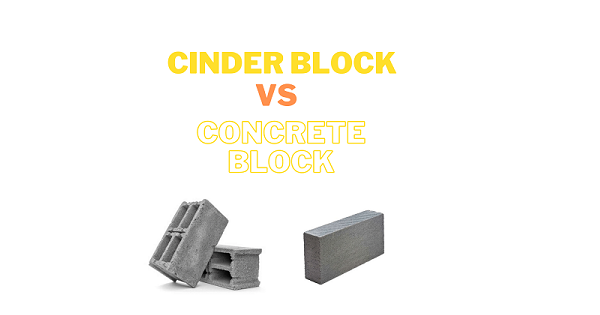The terms “cinder block” and “concrete block” are often used as indistinguishable. Despite sharing some cardinal elements, they have many differences. People bear a misconception about thinking of them alike. In this article, we will describe all about cinder blocks vs concrete block. Read the full article to learn all the differences between cinder block and concrete block.
Cinder Block vs Concrete Block

The following are the dissimilarities between the cinder block and concrete block:
| Cinder Block | Concrete Block | |
|---|---|---|
| 1 | Cinder block comprises fly ash as aggregate. | The concrete block contains fly ash in the construction of masonry units. |
| 2 | Cinder blocks display a hollow rectangle structure. | Concrete block exhibits a flattened structure. |
| 3 | Cinder block is made of- concrete and coal cinders. | Concrete block is produced from steel, wood, and cement. |
| 4 | Cinder blocks are lighter than concrete blocks. | A concrete block contains stone or sand which makes it heavier. |
| 5 | Cinder block doesn’t have any tensile strength to withstand pressure. | Concrete block is a hard, durable substance. |
| 6 | As cinder blocks are not very inflexible, many building codes prohibit the use of them. | Concrete block is far stronger than a cinder block. |
| 7 | Cinder block is used in small places like garden walls or project walls. | Concrete block is used in more substantial construction projects. |
| 8 | Cinder blocks are depicted as old-fashioned because it wasn’t been massively produced in 50 years. | Concrete blocks are much in use because of their hardiness and advantages over the former. |
| 9 | Cinder block is costly because it needs more repairs. | Concrete block is easy to afford. |
{adselite}
Keywords: what are cinder blocks made of, concrete block vs cinder block, concrete cinder blocks, cinder blocks vs concrete blocks, cynder block, difference between cinder block and concrete block, concrete vs cinder block, cinder vs concrete block, is cinder block concrete, cinderblocks, are cinder blocks concrete
Related Articles:

